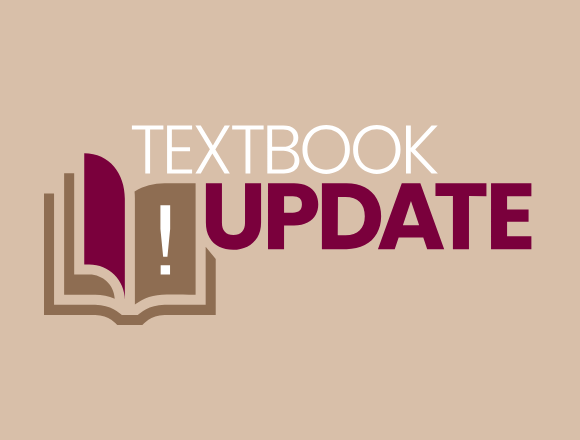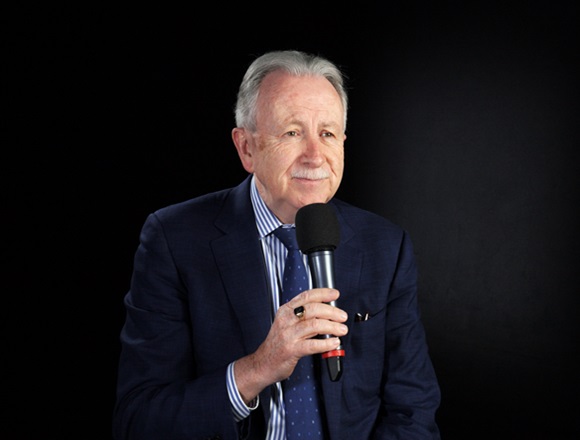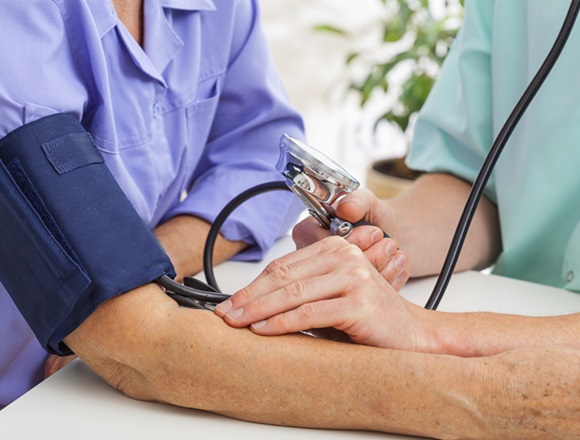Mike Sharma, MD, MSc, director of the Stroke Program at McMaster University, joins Roman Jaeschke, MD, MSc, DPharm, to discuss blood pressure management in patients after stroke.
Transcript
Roman Jaeschke, MD, MSc, DPharm: Good morning, welcome to another edition of McMaster Perspective. Again, we are welcoming Professor Mike Sharma, medical director of the Stroke Program and chair in stroke prevention.
Professor Sharma, blood pressure (BP) management, both in primary but mostly in secondary prevention of the strokes, and that includes both ischemic type of stroke and hemorrhagic type of stroke—there is always discussion around it when the patient shows up. Could you please comment on BP management at the time of stroke?
Mike Sharma, MD, MSc: That’s a great question. Hypertension is the most significant cause of stroke of both types, ischemic stroke and hemorrhage. Hypertension results in atrial fibrillation (AF), large artery disease, small artery disease, as well as intracerebral hemorrhage. One thing to remember is reducing BP, systolic pressure, by 10 mm Hg reduces recurrent stroke risk by 40%, so it’s a very potent weapon in our armamentarium to reduce the risk of recurrent stroke.
All categories of antihypertensives have that effect, except for beta-blockers. Beta-blockers don’t seem to be associated with stroke reduction. They’re not really first line or even second line, so it becomes a bit of a smaller factor. The questions that really concern clinicians when they’re dealing with stroke patients is, how soon after the acute event to reduce the BP? When is it safe? And what are the targets?
I’ll give it in 3 categories. The first and easiest is when you have intracerebral hemorrhage. There, where we have arrived now is that BP should be reduced as quickly as feasible in the emergency department (ED). For most patients under 140 mm Hg systolic, so that is the target. In years past, we were concerned that around the hematoma there might be some ischemia that we would exacerbate. That’s not proven to be the case. What it seems to do is decrease the chance of that hematoma expanding and the patient deteriorating. And most stroke centers are in the process of implementing very rapid treatment. As you can imagine, it requires some urgency in the ED and it requires a setting where you can monitor the BP consistently.
For ischemic stroke, it is divided into 2 things. Now, first off, the vast majority of patients with acute ischemic stroke have high BP. The higher the BP, interestingly, the worse the outcomes. If you look at trials in ischemic stroke, which say, if we reduce the BP quickly, does outcome improve? The answer is no. In spite of this observation that higher BPs are associated with worse outcomes, treating it very early doesn’t seem to benefit the patient. The guidelines that we have right now first are if you have had thrombolysis, then really that BP prior to thrombolysis and afterwards for 24 hours you want to keep under 185 mm Hg systolic, 105 mm Hg diastolic. That needs to be monitored because the risk of hemorrhage is greater. If you have not had thrombolysis, the current guideline says that you shouldn’t intervene until it is >210/110 mm Hg. Now, as you can imagine, that’s quite a high BP. The reason for that has been the lack of benefit in these trials with early BP lowering and the ongoing concern about worsening the ischemia. And it can worsen the ischemia; if you can imagine a vascular occlusion where the brain is surviving on collateral blood flow, and you suddenly drop the pressure, the collaterals fail and the infarct expands—large vessel occlusion. Without knowing all of those, that’s the reason the guideline is set high.
With most patients who are hypertensive before their stroke, you can restart their home BP medications in a day or so, and the BP will improve. Usually by 3 days that acute hypertensive response has decreased. After ~2 days I am quite comfortable starting BP medication. The trials that we’ve done of very early treatment in the setting of the ischemic stroke haven’t shown much hazard. So, usually by 2 days we’ve established whether there’s an occlusion, we’ve established if there is a lot of stenosis in their vessels that we might be worried about, and we’re comfortable. If you don’t have that detailed vascular imaging, it’s still probably quite safe by 2 to 3 days to treat that BP and get it down. And then, over the long term, that BP, the targets are exactly as we have for primary prevention. Generally, <140/90 mm Hg and, again, some patients believe that if they get to 140 mm Hg, they’re perfect and there’s no added benefit. Of course, that’s not true. The lower below that, the better. It’s really a straight-line response to getting a reduction in the risk of stroke recurrence.
Roman Jaeschke: So, the question that has been generating so much discussion over the last 5 years, how low to go to do it safely?
Mike Sharma: This is a really good question. I had a mentor once who said you should get it so low that the patient feels dizzy. I’m not quite sure that that is the best strategy. The evidence that we have right now is that... There was a nice trial done in the United States with some cognitive outcomes and the suggestion was the lower target, which there was <130 mm Hg, closer to 120 mm Hg. In those patients they had fewer instances of mild cognitive impairment. Now, one thing to know is, those were secondary outcomes and in that trial the population was really pretty healthy. These were people who didn’t have vascular disease, who didn’t have untreatable hypertension where you could get it down quite low, didn’t experience postural hypotension.
I think the short answer to your question is we don’t know the optimal. What we’ve seen and it’s similar to what’s been seen by lipids, is the lower you push it, the more benefit. The difference between low-density lipoprotein (LDL) and BP is, when it gets quite low, we do see some hazard. Where I start to become a little concerned in older patients is when it gets to be ~120 mm Hg. It doesn’t mean that I change things. The one thing I do like is when patients measure their BP and I can reassure them and their family physician that they feel perfectly well at BPs of 110 mm Hg. Sometimes there’s a temptation: you treat the patient, say, months out from the stroke, the BP is 110 mm Hg, and the family physician might say: “Well, that’s too low and I’m going to stop it.” But the evidence would suggest that’s better than 120 mm Hg or 130 mm Hg, and if they’re tolerating it, why reduce the medication?
Roman Jaeschke: Well, that is very helpful. Maybe my last technical question. Emergency room, hypertensive bleed, BP is high. You mentioned, get it down as soon as you can. What are you using at the Hamilton General Hospital to get it down?
Mike Sharma: The first-line drug that we use here is a beta-blocker.
Roman Jaeschke: Labetalol?
Mike Sharma: Yes, labetalol is usually a good medication to get it down, fairly safe. It’s available widely and we use it in the setting of thrombolysis as well to get the BP down quickly. And you can give it in aliquots, 10 mg repeatedly. If that is ineffective, our second-line agent is hydralazine and that works very well.
Now, my experience has been, once you use those two, then you’re really looking at a drip-off: a labetalol drip or some other agent. And that is when we will call for help from people like yourself, from our colleagues in internal medicine, to help us manage the BP.
Roman Jaeschke: I’m glad we could be of some use to you as well. Professor Sharma, it’s a pleasure to learn from you and to hear your expertise. I appreciate it very much.
Mike Sharma: Always a pleasure to talk to you.
Roman Jaeschke: Thank you.
 English
English
 Español
Español
 українська
українська









